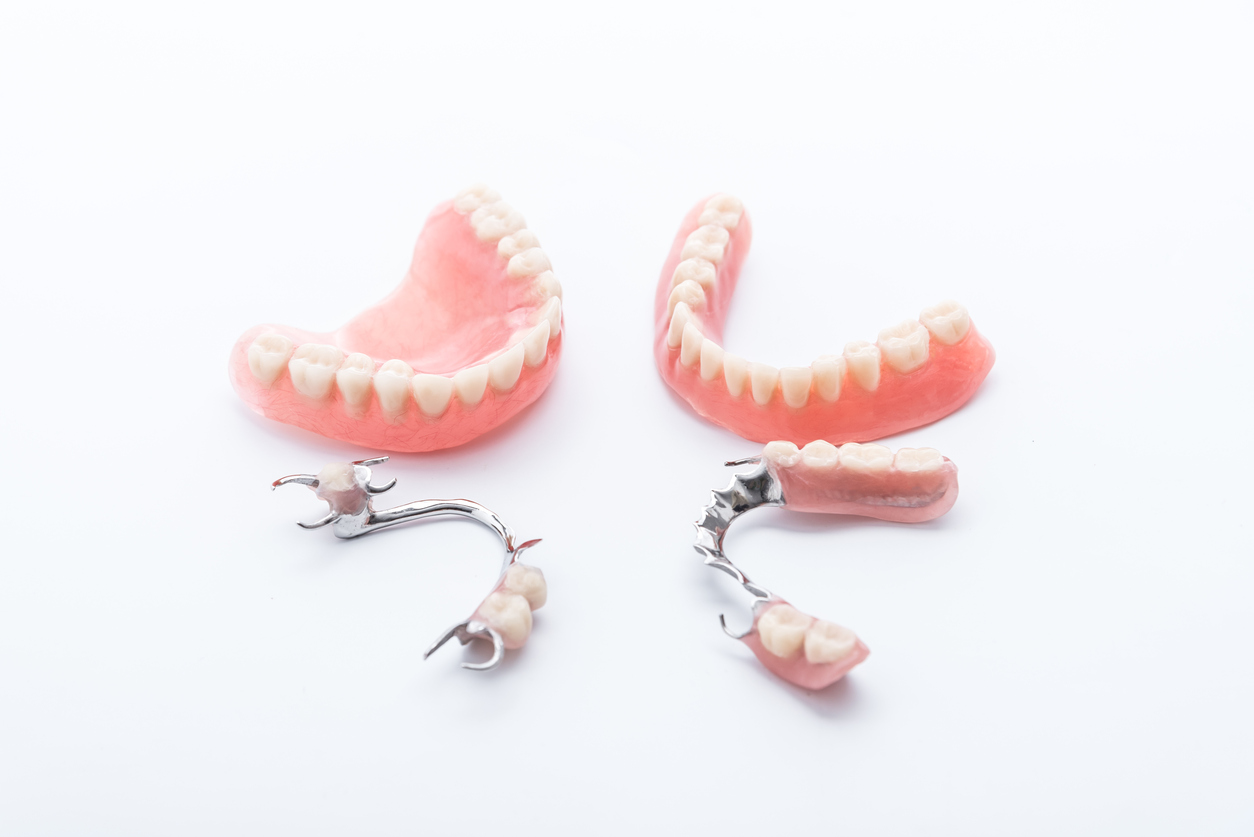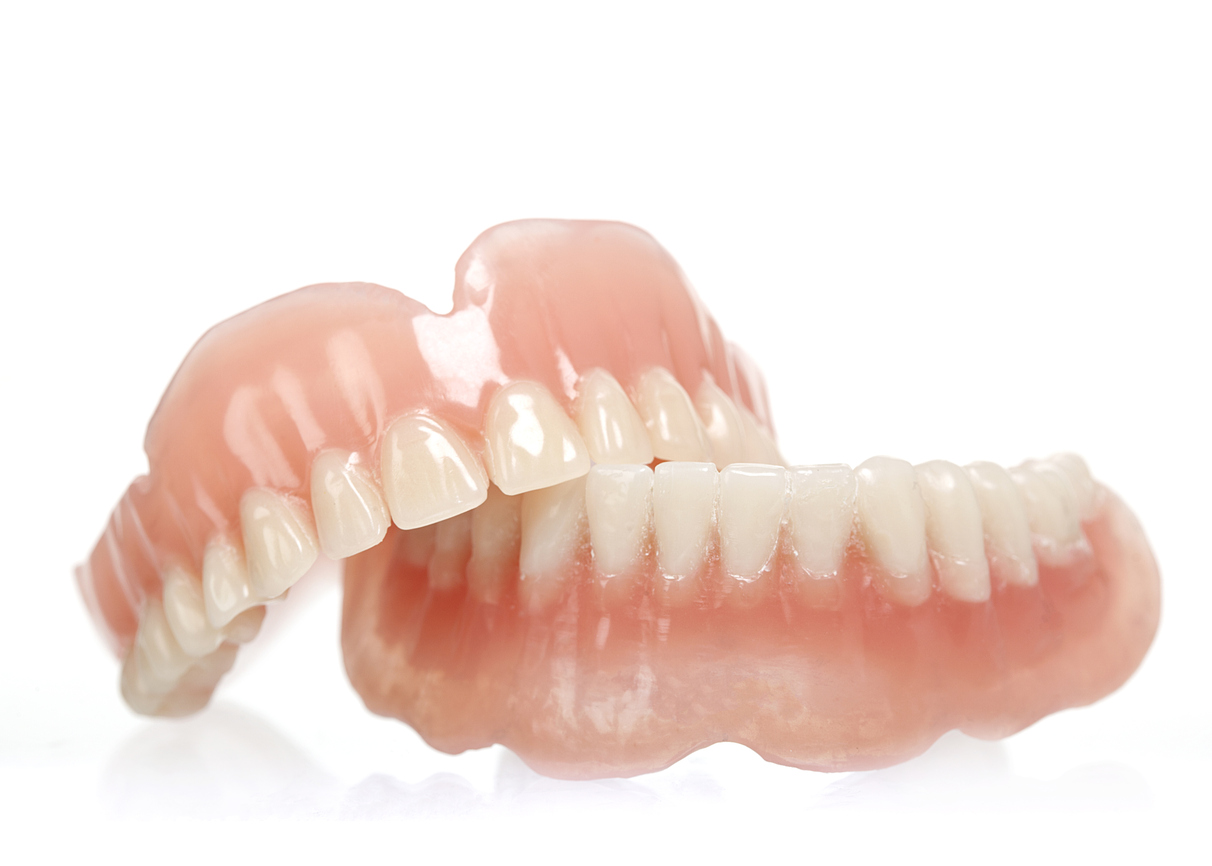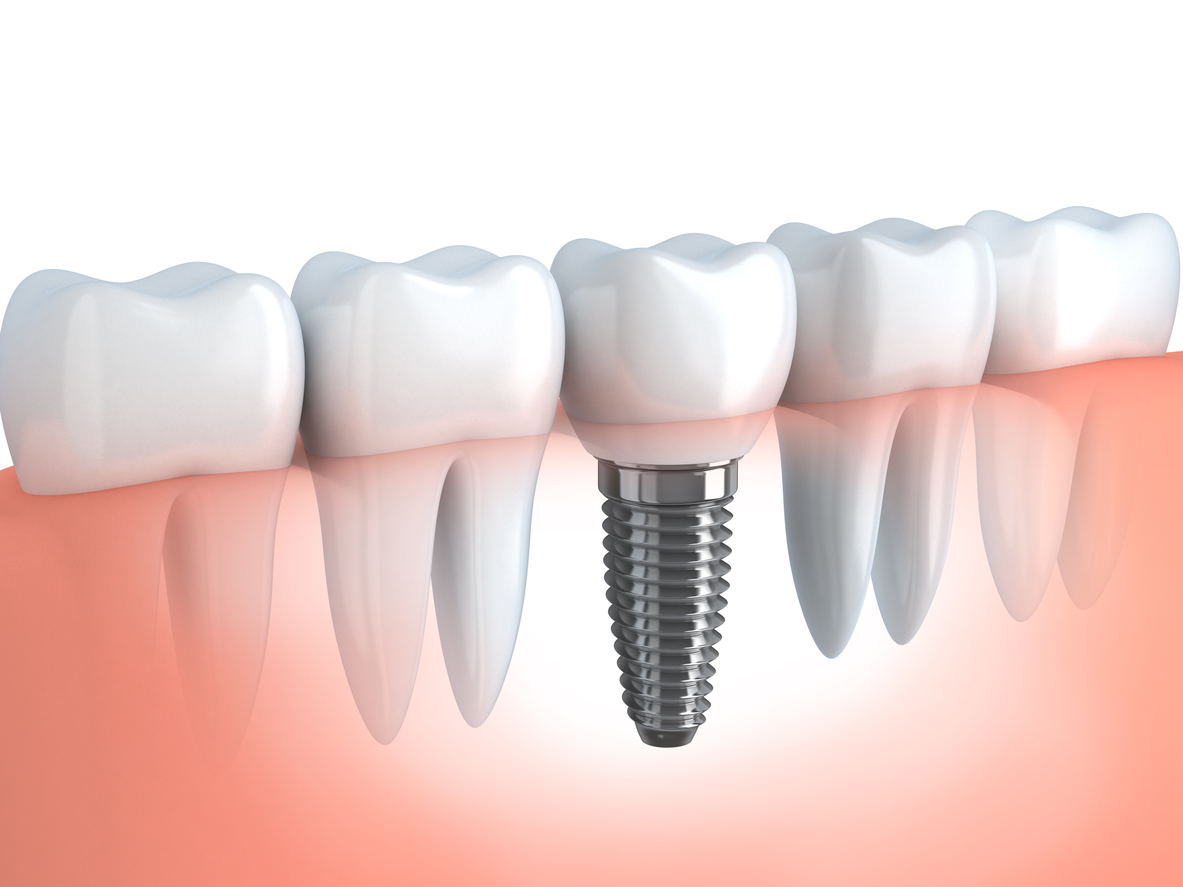Denture treatment – Restore your smile
There was a time when people thought of dentures as a last resort. They thought of them as a kind of failure option for people who could not take proper care of their teeth. Dentures used to be rough, uncomfortable, and ill-fitting and were not appealing to the eye. Fortunately, things have changed in a great way over the years. Today dentures are very comfortable and pretty much similar to the natural teeth when worn in the right way. All of these are as a result of the advancement of technology in the field of dentistry.
Dentures can replace missing teeth and restore your smile. If you have lost your teeth, whether from injury, gum disease or tooth decay, replacing your missing teeth will benefit your facial appearance. When you lose your teeth, your facial muscle can sag making you look older than you actually are. Dentures help in filling out the appearance of your face. If you are considering to get dentures or already have them, the chances are that you have some questions on how they are going to help you restore your smile. This article will discuss more about denture treatment and how it can restore your smile.
Contents
Dentures are artificial teeth and gums created by a dentist to replace removed or lost natural teeth. Dentures are different from other tooth replacement options because they are not permanently attached to the jawbone or the natural teeth. This is because dentures are primarily designed to replace lots of teeth at the same time. Dentures can either be full or partial dentures. Complete dentures are worn during the day and taken out for cleaning at night. Partial dentures work in the same manner,but for them to work, they have to be clipped on other natural teeth for support. Both these options are very common,and they come with their own unique pros and cons.
Traditionally, dentures used to be made out of plastic or porcelain. Today, modern technology has enabled dentists to make them out of hard resin. The material used to make dentures is known to be more fragile compared to the natural teeth. Therefore, it is important to handle them with care since they can crack or chip when dropped. This material also wears off quicker compared to the natural teeth and must be replaced after a certain period. The supporting structure that holds the artificial teeth in place that looks like the gums is also made out of resin.
Complete dentures
Complete dentures also known as full dentures are dentures are removable dental appliances meant to replace missing teeth. Complete dentures are beneficial when the patient has lost all his/her teeth. It can take a dentist a total of 8 to 12 weeks to complete a full denture treatment.
Immediate dentures
Immediate dentures are placed on the same day after the remaining teeth have been extracted. During your preliminary visit, your dentist will take measurements and make models of your jaw. You do not have to be without teeth during your healing period. However, your dentures may need to be readjusted or remade after the healing process.
Partial dentures
Partial dentures are removable dental appliances that consist ofartificial teeth that havebeen attached to a plastic acrylic base coloured like gums. Partial dentures are used on patients who have lost one or more teeth but not all of them. Dentures mostly use partial dentures when the adjacent teeth are not strong enough to hold a dental bridge. Partial dentures can be used on both the upper and lower jaw and remain secure on either location during their use. Partial dentures are a great addition to a smile of anyone who has lost their teeth due to different reasons. This is because it helps fill the spaces left and prevents the remaining tooth from shifting due to pressure.
Custom dentures
Custom dentures are made of more expensive teeth, which makes them appear more natural looking. One can see the new denture before it is completed. Your dentist customises the denture for your smile. Therefore, it is natural looking,and it suits your needs.
Over dentures
Overdentures might be for you if regular dentures make you feel uncomfortable when wearing them or you have a few existing teeth left. Your dentist will fit the overdentures to your existing natural teeth. This will make them fit you more comfortable and will still be easy to remove.
Implant supported dentures
With implant supported dentures, your dentist uses an implant to support the denture securely. The dental implant offers great support for a solid foundation, allowing the denture to stay securely in position. The implant is also natural looking and lasts for long too.
Snap in dentures
These are the most effective choice for dentures when it comes to stability. Snap-in dentures are held securely in place with the help of dental implants or anchors onto the existing natural teeth. Snap-in dentures are considered as unique due to the locator attachments embedded within the tissue side of the denture. These locator attachments are snapped onto the locator receptors or onto the implants. Therefore, it means that they are convenient and removable just like partial dentures. Usually, dentists use these dentures when a patient does not have any teeth but still has enough bone to support an implant.
If most of your natural teeth are missing, it is most likely that your dentist will recommend that you remove the remaining few. This makes sense when there are only, say two or three teeth remaining in the entire mouth. It is possible for the dentist to design dentures that will accommodate the remaining few teeth but this will end up being expensive,and the remaining teeth will not be as important. So it will only make sense for the dentist to remove the few remaining teeth and fit the patient with a complete denture.
On the other hand, partial dentures work the same way as complete dentures work,but they don’t replace all the teeth in the mouth. For some patients, partial dentures may be fixed,and for other it can be removable in a way that they can remove at night and have them cleaned. If your dentist recommends dentures as the best teeth replacement option for you, he/she will advise you on the best option.
Pre-denture healthy visit
While acquiring new dentures, you will need to make the first visit to your dentist. During this visit, the dentist will assess the health of your gums if they are ready for the new set of artificial teeth. To do this, your dentist will give you a complete examination which includes x-rays. This is to make sure that they are no unseen challenges that may emerge later with your jawbone. At this stage, the dentist might recommend some additional procedures such as removing any excess flabby tissues to ensure a perfect fit of the dentures. The dentist might also reshape the jawbone for a tighter fit. The dentist will also use this visit to remove any remaining teeth (that is if there are only a few remaining).
During this visit, the dentist will begin the process of making the mould of the upper and lower gums. The dentist prefers to undertake this process when you have absolutely no teeth so that he/she can make a perfect impression for your gums. Finally, your dentist will discuss with you some important elements such as the shape, size and shade of your new set of teeth.
Denture Length and Plane Adjustment
The second visit will be used for the dentist to decide the length of the teeth based on the patient’s mouth. Your dentist will make a correct alignment between the upper and lower jaw to ensure that the dentures are of an ideal fit. The dentist will make sure that the bite is perfect so that they will be no clicking when you are talking.
Denture Wax Try-in
This visit is meant for trying in the new dentures. This visit will allow the dentist to know if the dentures are fitting comfortably or they need some few adjustments. If there are some adjustments required, you will have to wait for a few more days while the dentist is working on them.
The fourth visit is now the final one. During this visit, you will leave with your dentures installed so that you can continue with your daily activities such as eating and speaking just as you used to. The dentures will also significantly improve your appearance and restore your smile.
It will naturally take you some time to adjust and adapt to the new set of dentures for eating, speaking and feel. Initially, your new set of artificial teeth will feel a little lose or odd for some few weeks. This is until the muscles in your tongue and cheeks learn how to keep the dentures in place. After the muscles have adjusted, you will now be able to remove and insert them without any difficulties. It is common for you to feel some minor irritation and soreness during the initial days. The saliva flow in your mouth might also increase. However, these problems will start diminishing as soon as you start adjusting to the new dentures.
Learning to eat may also give you some difficulties during the initial days,and it might feel uncomfortable. Most likely, your dentist will recommend that you start eating some soft foods as you adapt. After you have adjusted, you can now go back to eating your favourite food just as you used to as part of your normal diet. However, there are some foods that you should avoid such as some hard and crunchy foods. You might also want to avoid any foods that are sticky such as chewy candies and gum.
Some patients may also find it a bit difficult to speak while wearing dentures. It will take some practice to learn how to speak well with dentures on. If the speaking problem persists for quite some time, you should consult your dentist. In addition, if you experience discomforts for a long period, you should consult your dentist as well. Your dentures may be requiring some adjustments.
Restore Your Smile
Dentures are a great solution to missing teeth. They offer the patient with a new set of teeth that are comfortable and natural looking. They also help restore a beautiful smile. A smile is an awesome way to communicate and meet different new people. It is said a smile alone can be able to communicate a thousand words.
Pain-free meals
Eating your meals with missing or damaged teeth can be extremely painful. In fact, some people with missing or damaged teeth have to avoid certain foods completely. Fortunately, your dentist can design custom-made dentures for you that fit like a glove. So eating is once again made a pleasant and satisfying experience.
Prevents bone loss
When adults lose their teeth, it often leads to bone loss. And to maintain density, the bones need stimulation. In this case of the jaw bones, stimulation is brought by the constant movement of teeth. If teeth are missing, the jaw starts to deteriorate and reduce in size. Depending on the number of the missing teeth, the face structure can collapse hence altering one’s appearance and making one look much older than his or her age. Dentures offer support to sagging facial muscles and structures, thus adding years to the one’s appearance.
Natural speech
A lot of people experience speech problems after their teeth are extracted or fallen out. Gaps from the missing teeth can create embarrassing speech impairments accompanied with certain phonetic sounds. Dentures will end your struggle with communication by restoring the fullness of your natural smile. With dentures, you do not have to worry about repeating yourself or being misunderstood when missing teeth change your diction or pronunciation.
Protect tooth alignment
If you are missing some teeth, a partial denture can be used to fill them in. This helps to protect the alignment of the remaining teeth. When one chews with missing teeth, the remaining teeth can drift into the gaps and lead to misalignment. Overtime, this may result in more tooth loss. Dentures prevent this by filling in the spaces and keeping the bite stress evenly spread.
Specific to you
Your dentist will customise your dentures in a way that they will measure exactly as your mouth. He or she will make take a mould of your mouth and come up with dentures that can comfortably fit you. Dentures are never similar to all patients. This means that you will be able to get the most realistic and comfortable fit possible.
Taking proper care of your teeth is essential for both the health of your dentures and mouth. Here are some of the tips for taking proper care of your dentures.
Handle with care
Dentures can crack or fracture if you drop them. Therefore, dentists recommend folding a towel over the sink or putting a bath mat on your floor to soften the fall in case you drop them. Also, dentures can warp if they are put in hot water. So, remember not to leave them in a bowl of hot water or hold them under a running faucet of hot water. Always ensure to use cold or lukewarm water when submersing your dentures.
Brush your dentures at least daily
Gently remove and clean your dentures on a daily basis. It is recommended to soak and brush your dentures with a soft-bristled brush and non-abrasive cleanser to clean out plaque and food remains. If at all you use denture adhesive, clean the grooves that fit against your gums to remove any remaining adhesive. Never use denture cleanser inside your mouth.
Brush with a denture brush and not a regular toothbrush
A denture brush is a soft bristled brush that is tapered to clean those hard to reach places. Its bristles are softer than normal toothbrushes and cannot scratch the plastic of your dentures. When you use a normal toothbrush, it may leave tiny, almost invisible scratches in your dentures which will become harbours for bacteria.
Give them a break
Always take out your dentures at night before retiring to bed so that your mouth tissues can recover from wearing them during the day. In case taking out your dentures at night is not an option for you. Then ensure that you remove them for 6 to 8 hours at another time of the day. After removing them, you can soak them in warm water if they have metal clasps. If they do not have metal clasps, you can soak them in either a special denture cleanser or a half-vinegar, half-water solution. Soaking helps in removing plaque, tartar, bacteria and stains.
Due to the fact that dentures are made out of artificial material and are not attached on top of the existing enamel, they do not deteriorate with time. Actually, the main reason why most people replace their dentures is because of the changes that occur in their mouth. This is the natural part of aging,and your dentures will need some readjusting to remain secure and comfortable.
If you visit your dentist on a regular basis, he/she will be able to spot the need for readjustment early before you start experiencing irritation and tenderness. Dentures can last for a number of years if they were made out of quality material and if they are well taken care of. Listen and implement all the advice your dentist gives you on how to take proper care of your dentures. If you do that, your dentures will last longer and will allow you to continue with your life in a normal way.
Irrespective your type of dentures, all dentures require cleaning on a daily basis. Even if dentures are made up of artificial material, they are still prone to plaque, tartar and bacteria and can be the cause of harm to your gums.
To properly clean dentures, remove them and run some clean water on them to remove any dislodged food particles underneath the structure or along the gum line. You can then brush the dentures all over using some mild soap or denture cleaner with a soft-bristled toothbrush. You can also acquire a denture brush for the same purpose from your dentist. Be sure not to use the regular toothpaste used in natural teeth, electric toothbrushes or mild soap as these may be too abrasive to the dentures. They may damage the material thus wearing it off.
While your dentures are out of your mouth, make sure that you clean your gums and any natural teeth remaining with a soft and wet toothbrush with some fluoride toothpaste. If you feel like your brush is too rough, you can wipe your gums using a wet cloth. Just wrap the cloth on your finger and gently rub the surfaces of the gums making sure that you cover all the surfaces.
Many people shy away from getting denture implants due to the misconception about comfort associated with the dental appliance as well as an unattractive appearance. However, dentures that have been custom made specifically for you are less likely to have such problems. Dentures used today are not similar to the ones our grandparents used to wear. Dentists today can access modern technology in dentistry and come up with dentures that look just like your natural teeth. As such, patients are pleasantly amazed at the benefits that come with dentures. They enable you to restore your beautiful smile among other benefits.
Your dentures are an investment for your future. Make sure that you get a qualified dentist in the field when you are ready to start the journey with dentures.




